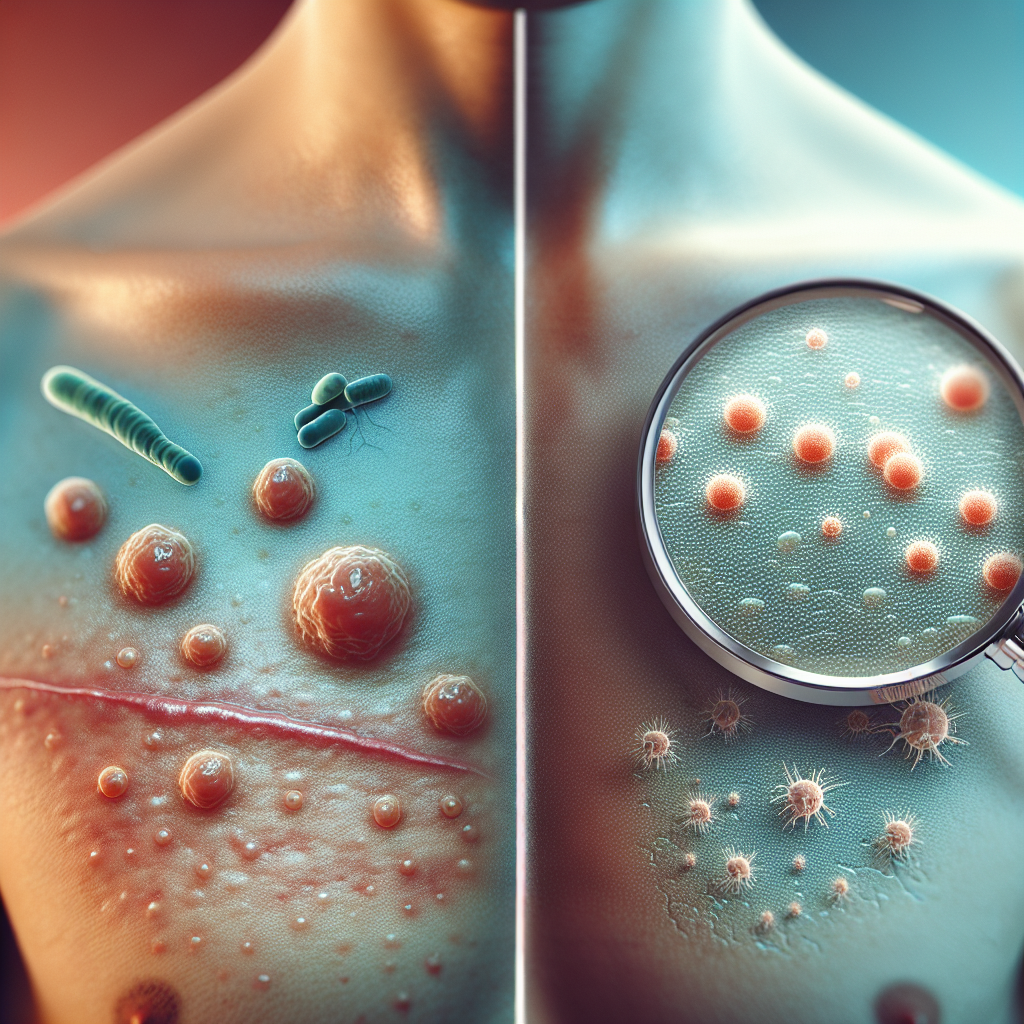How to Cure Acne: The Role of Fungus-Fighting Ingredients
Acne is a common skin condition that affects millions of people around the world. While there are numerous causes and treatments, recent studies have highlighted the importance of fungus-fighting ingredients in managing acne. In this blog post, we’ll explore how these ingredients can help clear up your skin, improving both your appearance and your confidence. 🌟
Table of Contents
1. Introduction
2. Understanding Acne: More Than Just a Skin Problem
3. The Connection Between Fungus and Acne
4. Key Fungus-Fighting Ingredients
– Tea Tree Oil
– Green Tea Extract
– Probiotics
– Zinc
5. How to Incorporate Fungus-Fighting Ingredients Into Your Routine
6. Conclusion
7. FAQs
Understanding Acne: More Than Just a Skin Problem
Acne is not just a teenage problem; it can affect anyone at any age. It is primarily caused by clogged pores, bacteria, and excessive oil production. However, recent research suggests that fungi, particularly the yeast known as Malassezia, can also play a significant role in acne development. This opens up new avenues for treatment, focusing on ingredients with antifungal properties.
The Connection Between Fungus and Acne
While bacteria have long been considered the primary culprits, studies have shown that fungal organisms can contribute to acne, particularly in conditions like fungal acne. This type of acne is often misdiagnosed due to its similar appearance to bacterial acne. The presence of Malassezia yeast can exacerbate skin conditions, leading to stubborn, itchy, and inflamed pimples.

Key Fungus-Fighting Ingredients
Tea Tree Oil
Tea tree oil is a powerful essential oil known for its antibacterial and antifungal properties. It can penetrate the skin to unblock sebaceous glands, disinfect pores, and dry out whiteheads, blackheads, and pimples. Adding a few drops of tea tree oil to your skincare routine can help manage acne caused by fungal infections.
Green Tea Extract
Rich in antioxidants, green tea extract has been shown to reduce inflammation and fight bacteria and fungi. Its polyphenols can help regulate the skin’s oil production and reduce acne flare-ups. Incorporating green tea extract into your skincare can calm irritated skin and prevent future breakouts.
Probiotics
Probiotics are beneficial bacteria that help maintain a healthy balance in your gut microbiome. They can also boost your skin’s defense against harmful fungi. By improving your gut health, probiotics can indirectly reduce the severity of acne by lowering systemic inflammation and supporting your immune system.
Zinc
Zinc is a mineral that plays a crucial role in skin health. It helps regulate oil production and supports the immune system in fighting off fungi and other pathogens. Zinc can be consumed orally or applied topically to reduce acne severity and promote clear skin.
How to Incorporate Fungus-Fighting Ingredients Into Your Routine
Incorporating these ingredients into your skincare routine doesn’t have to be complicated. Start by selecting products that contain one or more of these ingredients. Look for cleansers, serums, or spot treatments featuring tea tree oil, green tea extract, or zinc. Consider adding a probiotic supplement to your daily routine to enhance your skin from the inside out.
Additionally, always patch-test new products to ensure they don’t cause irritation. Consistency is key, so give your skin time to adjust to new ingredients and monitor your progress over several weeks.
Conclusion
Acne can be a persistent and frustrating condition, but understanding the role of fungi in its development can open up new treatment possibilities. By incorporating fungus-fighting ingredients like tea tree oil, green tea extract, probiotics, and zinc into your skincare routine, you can take meaningful steps toward clearer, healthier skin. Remember, it’s important to tailor your routine to your skin type and consult with a dermatologist for personalized advice. 💖
FAQs
Q: Can I use tea tree oil directly on my skin?
A: It’s recommended to dilute tea tree oil with a carrier oil before applying it to your skin to avoid irritation.
Q: How long does it take for these ingredients to show results?
A: Results can vary, but you may start to see improvement within 4 to 6 weeks of consistent use.
Q: Are there any side effects of using fungus-fighting ingredients?
A: Some individuals may experience irritation or allergic reactions. It’s important to patch-test new products and consult a dermatologist if you have concerns.
By understanding and addressing the role of fungus in acne, you can enhance your skincare routine and take significant strides toward achieving the clear skin you’ve always wanted. 🌺
